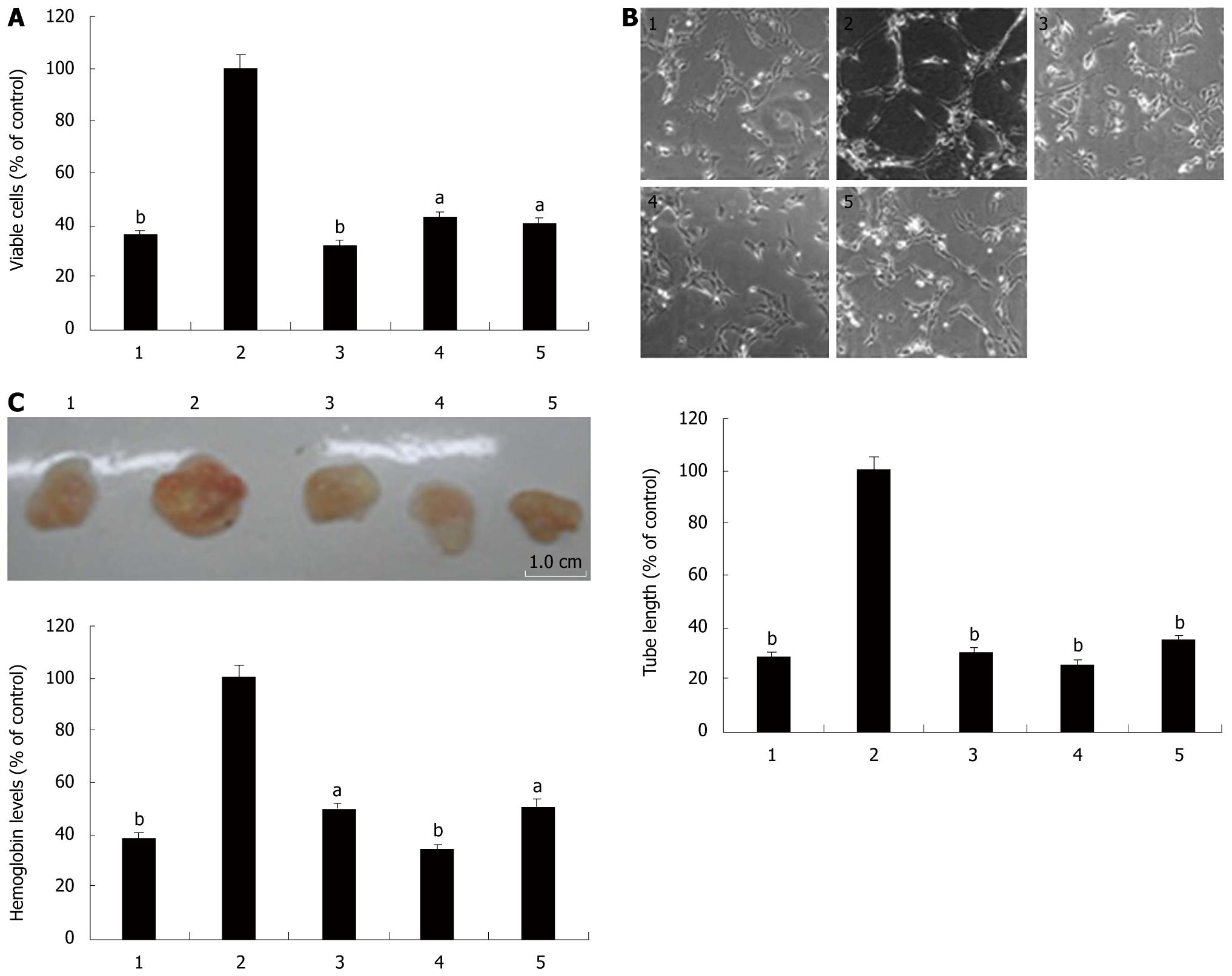Copyright
©2011 Baishideng Publishing Group Co.
World J Gastroenterol. May 14, 2011; 17(18): 2315-2325
Published online May 14, 2011. doi: 10.3748/wjg.v17.i18.2315
Published online May 14, 2011. doi: 10.3748/wjg.v17.i18.2315
Figure 5 (-)-Epigallocatechin-3-gallate inhibits interleukin-6 induced angiogenesis in vitro and in vivo.
The in vitro angiogenesis was determined by 3-[4, 5-dimethylthiazol-2-yl]-2, 5-diphenyl tetrazoliumbromide (MTT) and tube formation assay. Human umbilical vein endothelial cells (HUVECs) were cultured with the conditioned media in the presence of vascular endothelial growth factor (VEGF) neutralizing antibody, (-)-epigallocatechin-3-gallate (EGCG) or AG490. After 48 h incubation, the viable cells were quantified by MTT assay (A), and the formed tubes were fixed, stained, photographed and analyzed (B). The in vivo angiogenesis was determined by Matrigel plug assay. Matrigel plugs containing the conditioned media with VEGF neutralizing antibody, EGCG or AG490 were subcutaneously injected into nude mice. One week later, the Matrigel plugs were harvested and examined by measuring the density of hemoglobin (C). interleukin-6 (IL-6) apparently promoted vascular endothelial cell proliferation and tube formation in vitro and vascularization of Matrigel plugs in vivo. VEGF neutralizing antibody, EGCG and AG490 all markedly decreased these effects. 1: Without IL-6 stimulation as a negative control; 2: With IL-6 stimulation as a control; 3-5: With IL-6 stimulation and VEGF neutralizing antibody, EGCG or AG490. Values are expressed as percent of control (means ± SE, n = 3, aP < 0.05, bP < 0.01).
-
Citation: Zhu BH, Chen HY, Zhan WH, Wang CY, Cai SR, Wang Z, Zhang CH, He YL. (-)-Epigallocatechin-3-gallate inhibits VEGF expression induced by IL-6
via Stat3 in gastric cancer. World J Gastroenterol 2011; 17(18): 2315-2325 - URL: https://www.wjgnet.com/1007-9327/full/v17/i18/2315.htm
- DOI: https://dx.doi.org/10.3748/wjg.v17.i18.2315









